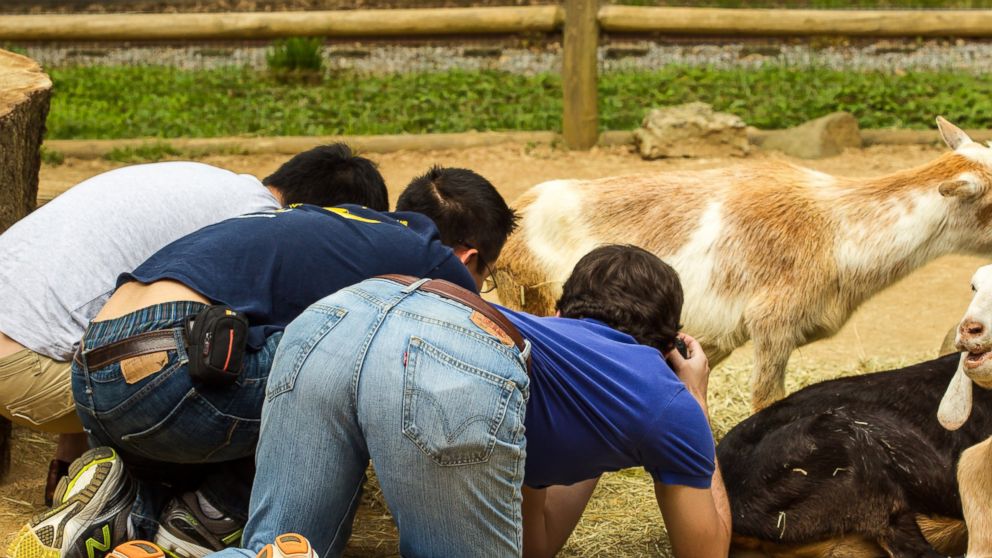Everyone Poops. And Everyone Takes 21 Seconds To Pee
There is a mathematical constant for mammilian urination.

Oct. 21, 2013— -- intro: Well this is a relief. A team of scientists has discovered a "law of urination" in mammals. It seems large fur bearing species take about 21 seconds to pee.
While visiting a zoo, Patricia Yang and her colleagues at Georgia Institute of Technology in Atlanta noticed that animals of all shapes and sizes, male and female, took about the same amount of time to empty their bladders.
Privacy be dammed, Yang's team used high speed video to film various creatures relieving themselves and scoured Youtube for similar footage. They found that the time it takes for mammals to completely void a full bladder follows a mathematical constant.
It's animal's mass raised to the power of a sixth in case you were curious.
Why has this constant remained undiscovered for this long? Previous animal pee models only took bladder pressure into account, Yang said. But her research accounts for the length of the urethra and gravity.
quicklist: 1category: The Law Of Urinationtitle: Elephantsurl:text: An elephant's bladder holds rougly 161 liters of urine, about three kitchen trash bag's worth. It's urethra is about 1 meter long and 10 centimeters wide. As urine travels down the pachyderm's pipes, it accelerates due the force of gravity. media: 20634851
quicklist: 2category: The Law Of Urinationtitle: Dogs And Goatsurl:text: In contrast, medium-sized animals like a dogs and goats have bladders that only hold about soda bottle's worth of urine (1 liter) and they have shorter, narrower urethras. There is less time for gravity to exert a force so their urination rate is slower. media: 20634841
quicklist: 3category: The Law Of Urination title: Rodentsurl:text: The law is not universal, Yang said.
"It doesn't apply to mammals smaller than cats because their bladders are so tiny viscosity and surface tension are more important factors than gravity," she said.
Yang said this may explain why rodents and other miniscule mammals pee in droplets rather than jet streams as larger animals do. They only take a second or less to do their business.
media: 20634811
quicklist: 4category: The Law Of Urinationtitle: Sea Mammalsurl:text: Yang didn't study dolphins or other seafaring mammals. She speculated their rate of pee may be affected by the relative saltiness of their urine compared to the salt water they pee into. No doubt it would be challenge to get close up video while they urinate underwater to know for sure.media: 20634812
quicklist: 5category: The Law Of Urinationtitle: Humansurl:text: The law of urination should apply to humans but as David Hu, a Georgia Tech assistant professor of mechanical engineering and biology who also participated in the research, pointed out, 21 seconds is just an average that comes with a margin of error.
"The one's digit is really irrelevant. I mention this so the people who will do this at home will not be disappointed," he said.
media: 20634831
quicklist: 6category: The Law Of Urinationtitle: Why It Mattersurl:text: Lest you think this is Ig Nobel worthy research, Yang said her study does have a purpose.
"This information could be used to build better water towers which work in a similar way by using gravity to pump fluids," she said.
Yang has also investigated blink rates of different species and how much water animals can shake off their fur.



